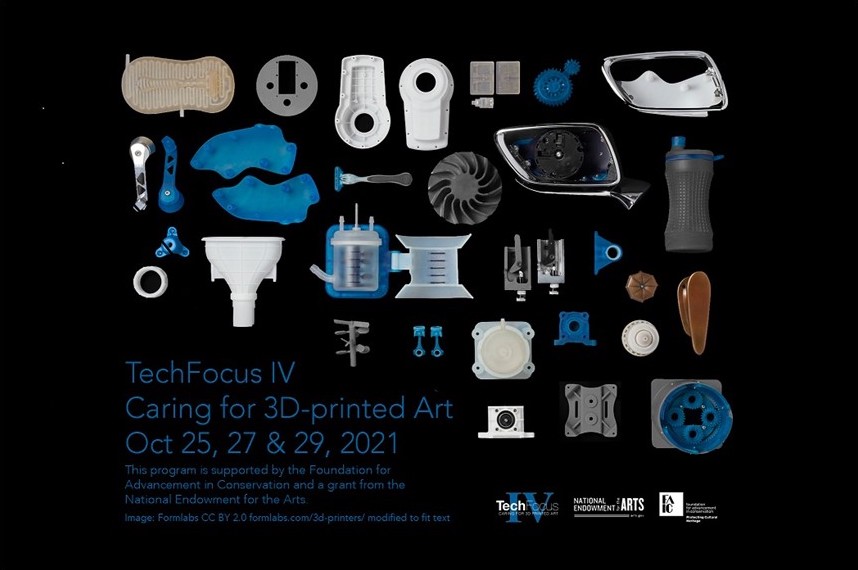
This recent Zoom-based webinar ran over three alternate days in October presented via FAIC and hosted from the US. Despite the unfriendly timezone of 0330–0600 for the live sessions, for anyone interested in this area the content was worth an early start. The program sessions ranged from entry level introductions to 3D-print technology, to applied case studies around collection works with artist, curatorial and technician perspectives.
At its conclusion it had described the unknown future of the materials and physical forms of ‘original’ 3D-printed objects, and the practical issues around their preservation and even replication. Reviewing the sessions now I see a common need/opportunity to apply different perspectives to collecting the 3D-printed form—as it can ultimately exist anywhere between mass produced or experimental design prototypes and conceptual art pieces, to un/intentionally evolving or iterative works. As always, the key to their ‘preservation’ within a collection lies with clear and comprehensive documentation—including defining what it is that you are acquiring, and I refer to the Australian Copyright Council Info Sheet for a useful starting point.
The NGV Conservation Department has been developing an artist questionnaire specific to the acquisition of 3D-printed art, and the issues covered in the seminar provided timely insight into the creative variables, challenges and characteristics of these works.
This event was part of the ongoing TechFocus workshop series organised by the American Institute for Conservation’s Electronic Media Group to provide detailed technical education in the preservation of media art. The TechFocus website offers videos of presentations made at past workshops, and presumably the TechFocus IV sessions will also become available in the near future. I would recommend them to all interested parties.